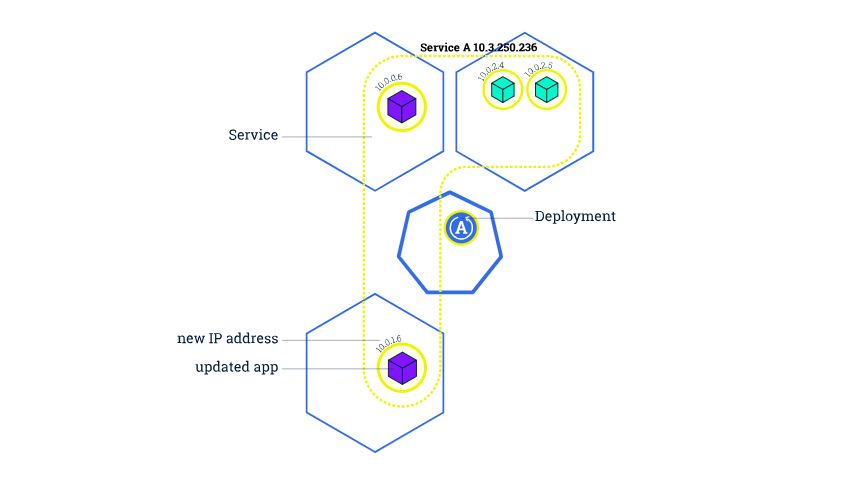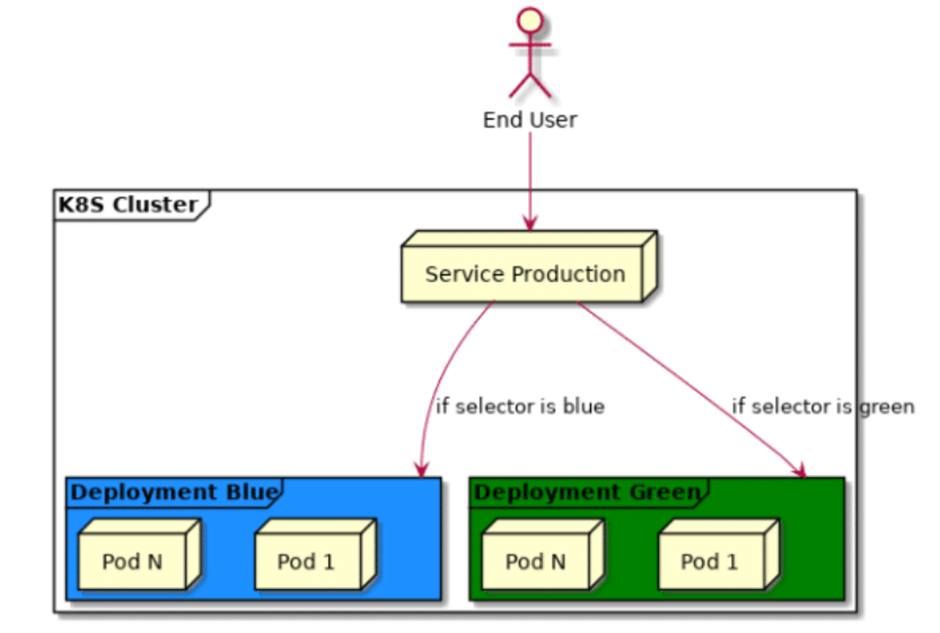Table of Contents
Introduction Kubernetes Deployment Strategies
Deploying applications is a crucial part of the software journey, and Kubernetes has transformed how we handle this process. But deploying applications in Kubernetes goes beyond just putting containers in action. It requires some planning and the use of effective strategies to make sure everything runs smoothly. In this article, we’ll explore various Kubernetes deployment strategies and when it makes sense to use each one.
The Significance of Kubernetes Deployment Strategies
Deploying applications is a monumental task in the software world, and the chosen strategy significantly influences the availability, user experience, and the ability to revert quickly in case of issues. The versatility of Kubernetes comes to the forefront with its array of deployment strategies, precisely tailored for distinct situations. These are known as “Kubernetes Deployment Strategies.”
Rolling Updates

What is it?
Rolling Updates gradually replace the old version of your app with the new one. It’s like switching out parts of a machine while it’s still running, so there’s minimal downtime.
When to Use:
Great for apps that need to stay available all the time. Works well for apps that don’t mind having a mix of old and new versions running at the same time.
How to Do it:
You can set it up in your configuration file like this:
apiVersion: apps/v1
kind: Deployment
metadata:
name: example-deployment
spec:
replicas: 3
strategy:
type: RollingUpdate
rollingUpdate:
maxSurge: 1
maxUnavailable: 1
template:
metadata:
labels:
app: example-app
spec:
containers:
- name: example-container
image: example:latestBlue-Green Deployment

What is it?
Blue-Green Deployment keeps two identical environments – one is active (blue), and the other is inactive (green). You switch between them to make updates with minimal downtime.
When to Use:
Perfect for apps that can’t afford any downtime. It’s like rehearsing a play before showing it to the audience – you make sure everything works perfectly before the big reveal.
How to Do it:
Your configuration might look like this:
apiVersion: apps/v1
kind: Deployment
metadata:
name: example-deployment
spec:
replicas: 3
strategy:
type: Recreate
template:
metadata:
labels:
app: example-app-blue
spec:
containers:
- name: example-container
image: example:blue
---
apiVersion: apps/v1
kind: Deployment
metadata:
name: example-deployment-green
spec:
replicas: 3
strategy:
type: Recreate
template:
metadata:
labels:
app: example-app-green
spec:
containers:
- name: example-container
image: example:greenCanary Deployment
What is it?
Canary Deployment introduces the new version of your app to a small group of users before rolling it out to everyone. It’s like testing the waters before diving in.
When to Use:
Great for reducing risks with new releases. It’s like slowly opening the curtains to see how the audience reacts before showing the entire performance.
How to Do it:
Your configuration might include:
apiVersion: apps/v1
kind: Deployment
metadata:
name: example-deployment
spec:
replicas: 3
strategy:
type: RollingUpdate
rollingUpdate:
maxSurge: 1
maxUnavailable: 1
template:
metadata:
labels:
app: example-app
spec:
containers:
- name: example-container
image: example:latest
---
apiVersion: networking.k8s.io/v1
kind: Ingress
metadata:
name: example-ingress
spec:
rules:
- host: example.com
http:
paths:
- path: /
pathType: Prefix
backend:
service:
name: example-service
port:
number: 80Conclusion: Kubernetes Deployment Strategies
Picking the right deployment strategy in Kubernetes is all about making sure your application stays available, your users are happy, and you can quickly fix things if they go wrong. Whether you choose Rolling Updates, Blue-Green Deployments, Canary Deployments, or a mix of these strategies, understanding how they work helps you make smart decisions, ensuring your Kubernetes deployments are a success.
For related articles click here.

Leave a Reply